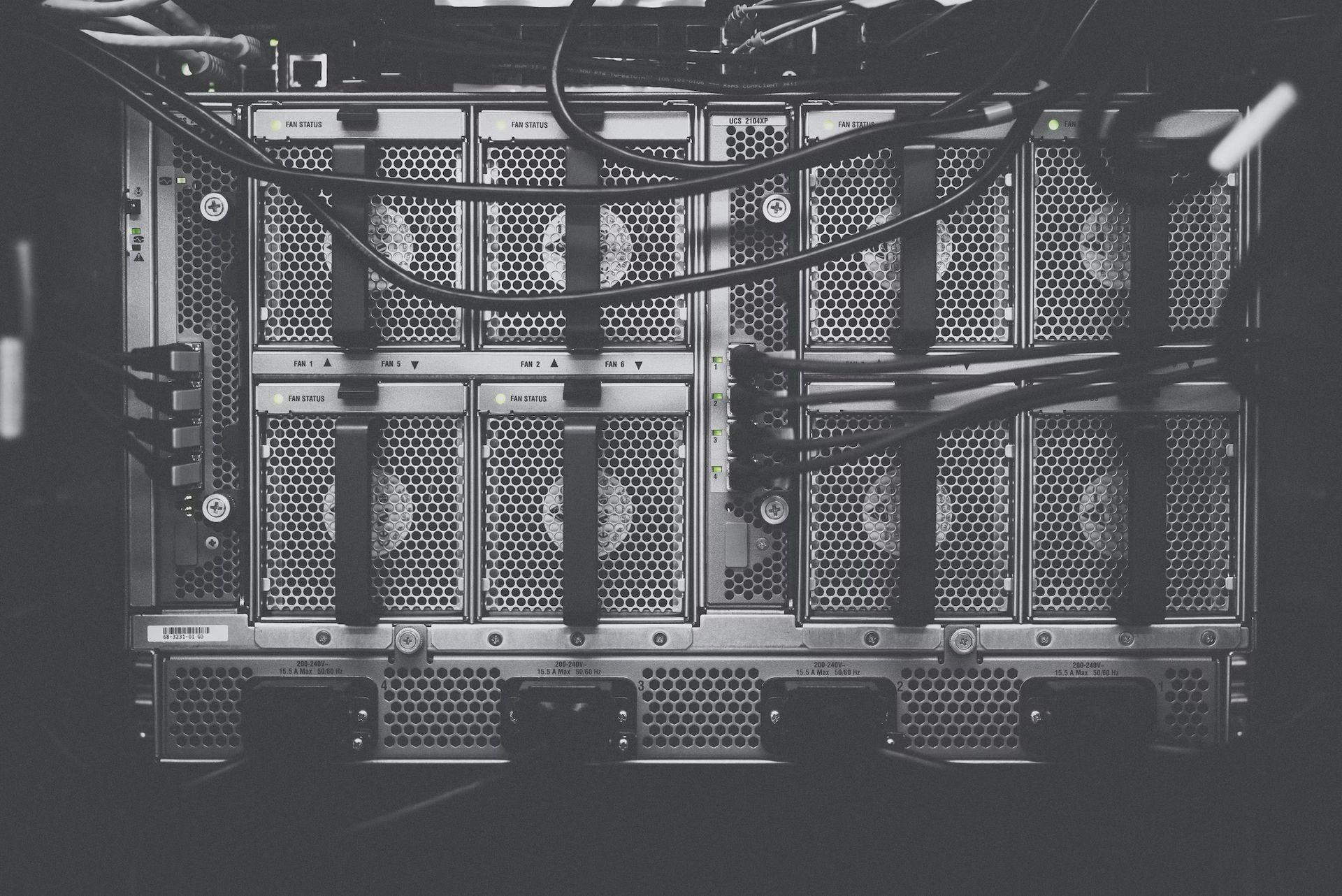Using a disaster recovery as a service is a very clever thing to do today. Because modern businesses depend on data, so that any unplanned IT outage can have a detrimental effect on profitability, productivity, sales, and customer experiences (CX). Therefore, it is crucial that businesses choose a dependable method to reduce data loss and preserve business continuity in the event of natural catastrophes, equipment breakdowns, power outages, or cyberattacks that take down IT resources.
It has historically been expensive and difficult to coordinate company-wide data backups in order to prepare for the quick recovery of lost data continuously. Fortunately, disaster recovery as a service (DRaaS) solutions based in the cloud are emerging to streamline operations and speed up data recovery timeframes. Businesses should consider disaster recovery as a service solution that has WAN-optimized replication, doesn’t affect production workloads, and use global data deduplication to cut down on wasteful network and storage expenditures.
What is disaster recovery as a service (DRaaS)?
Third-party hosting disaster recovery is known as disaster recovery as a service (DRaaS). In order to enable failover in the event of a natural disaster, power loss, or another disaster that affects business continuity, involves replication and hosting of physical or virtual servers by the provider.
The fundamental tenet of DRaaS is that the remote provider, who often has a globally distributed architecture, is less likely to be impacted than the client in the event of an actual disaster. This enables the provider to assist the client in the worst-case disaster recovery scenario, in which a crisis forces the organization’s physical premises or computing resources to be completely shut down.

For on-premises or cloud computing settings, third-party disaster recovery as a service providers can offer failover services. Payment options include on-demand billing, usage-based billing, and continuing retainer agreements. Service level agreements often contain the needs and expectations for DRaaS. (SLAs).
What are the types of disaster recovery as a service?
Disaster recovery as a service providers primarily employ the managed, assisted, and self-service models.
Managed disaster recovery as a service service
In the managed disaster recovery as a service approach, external parties are in charge of disaster recovery in its entirety. In order to keep all infrastructure, application, and service updates current, choosing this option necessitates strong collaboration between enterprises and DRaaS providers. This is the best choice if you lack the knowledge and time necessary to run your own catastrophe recovery.
Your choice of XaaS provider can make or break your business
Assisted disaster recovery as a service service
Supported disaster recovery as a service might be a better option if you wish to be in charge of some components of your disaster recovery strategy or if you have specialized apps that might be challenging for a third party to manage. In this approach, the customer is in charge of implementing some or all of the disaster recovery plans while the service provider offers services and knowledge that can assist the process run more smoothly.

Self-service disaster recovery as a service service
A self-service disaster recovery as a service is the least expensive alternative; under this model, customers are in charge of disaster recovery planning, testing, and administration, and the provider offers backup management software in addition to hosting backups and virtual machines in distant locations. All of the main cloud service providers, including Amazon, Microsoft Azure, and Google Cloud, offer this architecture.
To ensure that operations can be seamlessly transferred to the provider’s remote data center and quickly resumed when local resources are restored, rigorous planning and testing are necessary when utilizing this architecture. This option is suited for businesses with internal disaster recovery and cloud computing knowledge.
How does disaster recovery as a service work?
When a crisis strikes, the disaster recovery as a service provider’s infrastructure functions as the client’s disaster recovery site. The provider’s service typically consists of a piece of hardware or software that can replicate data and virtual machines to one of its private or public clouds.
When using managed DRaaS, the service provider is in charge of the failover procedure, making sure that users are switched from the primary environment to the remote environment. Along with helping clients recover systems and go back to business as usual, DRaaS providers also keep an eye on disaster recovery activities. Your organization will be required to take on some of these duties in other types of disaster recovery as a services.

Small firms lacking internal disaster recovery expertise will find hosted DRaaS to be extremely helpful. Another advantage for smaller firms is the option to outsource infrastructure since it saves money on the expensive equipment required to run a disaster recovery site.
Why do organizations prefer to adopt disaster recovery as a service?
The primary benefit of deploying disaster recovery as a service is unquestionably cost savings. If a company chooses to build a similar infrastructure on its own, it will obviously need to buy the necessary hardware and software licenses, set up the backup site, and connect it to the main infrastructure via a network. In addition, because the distant site would need to be managed, the workload on the company’s IT staff will grow at the same time. Deploying a company’s own disaster recovery infrastructure will simply be too expensive for many businesses with just a few business-critical apps operating on a single server. All these concerns will be the responsibility of the cloud provider if DRaaS is used.
Every dark cloud has a silver lining with the container as a service (CaaS)
Building and maintaining your own disaster recovery site can be too difficult and expensive, as you are already aware. The same is true for setting up and evaluating backup and recovery procedures. You can forget about having a lot of administrative and maintenance work to do by getting rid of all of this infrastructure on your end and gaining access to a dashboard that automates the majority of the tasks and resources provided by disaster recovery as a service solution.
In other cases, DRaaS automatically backs up data to the cloud and retrieves the backup data in an emergency. RPO (recovery point objective) and RTO (recovery time objective) numbers, respectively, specify the backup frequency and recovery speed. The lower these levels, the greater the IT resilience of your business. On the other hand, you should be mindful that RTO and RPO values near zero suggest high costs; therefore, you must choose the best values by calculating the possible financial loss caused by a system outage.

Your data is safely backed up and stored in a faraway data center using disaster recovery as a service, as we already said. This means that the information will be shielded from both unforeseen loss and unwanted access.
You won’t be able to accomplish that security level when storing your data on your premises. Today, cloud-based service providers use trustworthy security measures, sophisticated encryption, and frequent and timely security upgrades to protect their data centers with your data stored within. Cloud service companies also employ techniques like private clouds and multi-factor authentication procedures to virtually impenetrable your data.
What are the 5 phases of a disaster recovery plan?
Basically, a disaster recovery plan includes five main steps:
Prevention
The steps made to prevent an incident. Preventing a mishap from happening. Operations of monitoring and deterrence.
Mitigation
Refers to actions that either prevent emergencies, lessen the likelihood that they will occur, or lessen the negative effects of emergencies that cannot be avoided. Common mitigation strategies include enforcing zoning laws and building standards, installing shutters, and erecting barriers like levees.
Preparedness
Activities improve a community’s capacity to react in the event of a disaster. The creation of mutual aid agreements and memorandums of understanding, training for emergency responders and concerned people, holding catastrophe drills to refresh training and test capabilities, and launching all-hazards education campaigns are typical preparedness steps.

Response
Actions are taken right before, during, and right after a hazard impact with the intention of preserving lives, minimizing financial losses, and easing suffering.
The emergency operations center may be activated, threatened people may be evacuated, mass shelters and care may be provided, emergency rescue and medical care may be provided, fire fighting may be conducted, and urban search and rescue may be conducted.
Recovery
Actions are made to restore basic services and fix physical, social, and economic damages in order to get a community back to normal or almost normal conditions. Rebuilding roads, bridges, and important facilities are typical recovery measures, as well as debris cleanup and ongoing mass care for displaced people and animal populations.
Machine learning makes life easier for data scientists
BaaS vs DRaaS
Businesses can back up files, folders, and entire data stores to remote, secure data centers using backup as a service (BaaS). Third-party managed service companies offer it (MSP). Instead of having the IT staff manage backups locally, it is the MSP’s obligation to maintain and manage them.
What is the difference between BaaS and DRaaS?
There are three primary differences between backup as a service and disaster recovery as a service:
- In contrast to DRaaS, which is in charge of backing up both data and infrastructure, BaaS just backs up data. In a DRaaS service, the MSP is in charge of setting up complete servers and making sure users can access them.
- Although BaaS is capable of making data recovery, the RPO and RTO are commonly measured in hours or days. This is due to the fact that transferring data back from the MSP to your on-premises data center can be time-consuming for huge datasets. Because a backup copy of your servers is ready to run on a different site, disaster recovery as a service solutions allow you to assess RPO and RPO in minutes or even seconds.
- BaaS expenses are substantially lower than DRaaS costs because your backups’ storage needs are what drive most of the difference. You must pay more for resources like replication software, computing power, and networking infrastructure while using disaster recovery as a service.
What to consider when choosing a disaster recovery as a service?
The following are crucial factors to take into account when choosing a DRaaS supplier for your business.
Reliability
Early on, there were questions about the disaster recovery as a service provider’s resources and capacity to serve a particular number of clients in the event of a major regional disaster.
The majority of disaster recovery as a services available today are built using public cloud providers, which have practically infinite capacity. At the same time, even public clouds experience outages, so it’s critical to know what would happen if the disaster recovery as a service provider was unable to offer services in the event of a disaster. Another more probable scenario is that the DRaaS provider will carry out their obligations but fall short of their SLAs. Know your rights under the contract and how your company will respond and recover in each circumstance.

Access
Work with your disaster recovery as a service provider to establish how VPN will function, including whether it will be managed by the provider or redirected and how users will access internal apps in an emergency. If you utilize virtual desktop infrastructure (VDI), consider how a failover event will affect user access and choose a manager for the VDI in case of an emergency.
The massive Uber security breach causes an uproar in the cybersecurity community
If you have applications that can be accessed via the internet, discuss with service providers, clients, partners, and users how DNS will function in an emergency and whether it should switch to provider-managed DNS or remain with the current DNS (this also depends on whether your DNS is hosted or self-managed). Even if systems are properly switched over following a disaster, they will remain offline because DNS is a mission-critical service.
Assistance
Inquire about potential disaster recovery as a service providers and what their standard operating procedure and support are both in normal operations and in times of emergency.
- What are the steps in a disaster recovery plan?
- What qualified services the company provides during a disaster?
- What obligations your company has versus the provider?
- What is the testing procedure—ascertain whether you can perform backup and recovery tests on your own and whether the supplier performs testing or disaster “drills?”
- How long may the service provider continue to run your workloads once a disaster has been declared?

Disaster recovery as a service providers
The market is home to both huge IT and cloud providers, as well as businesses that only deal with data storage and protection. Here are a few notable brands:
- Acronis
- AWS
- Axcient
- Bios Middle East
- C&W Business
- Carbonite
- Databarracks
- Expedient
- Flexential
- IBM
- iland
- Infrascale
- InterVision
- Microsoft
- Net3 Technology
- Quorum
- RapidScale
- Recovery Point
- Sungard Availability Services (AS)
- TierPoint
- Unitrends
- VMware
- Zerto

Conclusion
Disaster recovery as a service simplifies IT administration and gives your IT personnel more time to focus on what they do best. You’ll be operational more rapidly since you cannot afford to put off the implementation of your disaster recovery plan. You won’t have to wait months for hardware installations and testing to finish with DRaaS.





